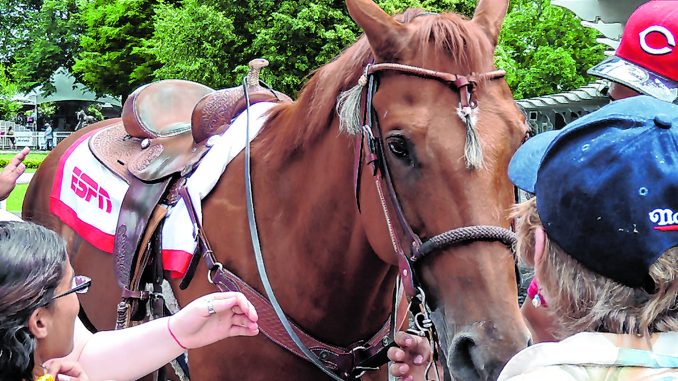
By Lauren Feldman and Janet Burns
This year’s Belmont Stakes portion of the 155th running of the Triple Crown came with notable accomplishments, such as groundbreaking female trainer Jena Antonucci’s win with Arcangelo, but also substantial challenges, including hazy track conditions and the tragic deaths of two horses.
The horses, named Excursionniste and Mashnee Girl, were euthanized following consecutive races on Saturday and Sunday of the Stakes. Both horses had the same trainer, Mark Hennig, and some organizations and officials have called for an investigation into the incidents.
Fatalities on and off the tracks are not new to the sport of horse racing, particularly in the U.S. According to Salon’s Rae Hodge, “We overbreed them for fleetness at the cost of hardiness, run them far too young at punishing speeds on poorly surfaced tracks and dope them until they can’t feel the lacework of fractures sprawling across their lightweight bones nor the arrest seizing their engorged hearts. And when they fall, rather than be inconvenienced by expensive medical treatment and unprofitable recovery time, we kill them.”
In an interview with NPR, The New York Times’ Joe Drape pointed out that the U.S. fatality rate is 2 ½ to 5 times greater than in the rest of the racing world. Drape also accredits that to our abuse of medications and drugs, which put horses back on the tracks before they’re ready. “You know, [in other countries] if your horse is sore, you’re not going to give him a corticosteroid to get him to the track to race.”
John Di Leonardo, an executive director of Humane Long Island, also commented, “Even those horses who survive are confined to tiny stalls 23 hours per day and often butchered at career’s end. It is clear that the public no longer supports this cruel industry that killed dozens of horses at the Belmont last year and kills 2,000 every year at racetracks across the U.S.”
So, as controversy swells, what measures are being put in place to protect these racehorses? Primarily, there is a mechanism called the Horse Racing Integrity and Safety Authority. HISA’s Racetrack Safety Program requires, among other standards; surface maintenance and measurement standards, collection and analysis of medication. While invaluable, HISA is still a relatively juvenile program. In general, horse deaths are down, but not out.
Janice L. Blake, a former Belmont jockey, commented in a statement, “Every year, the state of New York robs taxpayers and school children of hundreds of millions of dollars as horses like Mashnee and Excursionniste are run to their deaths. It is always the horses who lose when people bet.”

Be the first to comment